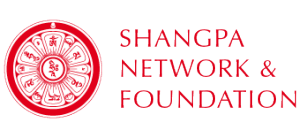Rāhula
rA hu la
10/11th cent.

Rahula (also known as “the Yogin of the Black Mountain”) is a quite known Indian Mahasiddha who was a teacher to both the great Atisha and Khedrub Khyungpo Naljor, the founder of the Shangpa tradition.
Indian Ancestors (5th–11th)

Rahula (also known as “the Yogin of the Black Mountain”) is a quite known Indian Mahasiddha who was a teacher to both the great Atisha and Khedrub Khyungpo Naljor, the founder of the Shangpa tradition.

It seems that there were at least three masters by this same name, and Jamgön Kongtrül considers him to be the middle one from among the three Vajrasanapas.
He was a master foretold by the Buddha. He preserved the Buddha’s teaching at the site of Buddha’s enlightenment (Bodhgaya), thus we know him as “he of the Vajra Seat”.

Maitripa is an important figure both in Mahayana and Vajrayana Buddhism. It is through him that Maitreya and Asanga’s crucial work on buddha nature, the Uttara Tantra Shastra, became widely followed in Tibet. He also transmitted the esoteric aspect of buddha nature, embodied in the mahamudra teachings, which treat the topic of mind in great detail and provide a wide range of progressive, highly-refined meditations.

Here is the story of the woman known by the name Sukhasiddhi in Sanskrit or Dewai Ngödrup in Tibetan. At one time, in the Moslem part of India [Kashmir], there were 38,000,000 cities. In one of these—in the one called the Western Moslem City—there lived a couple with three sons and three daughters. At one time, they became so extremely impoverished and destitute that they had only one jar full of rice left as their food supply.

Niguma was born in a region called the Land of Great Magic in Kashmir, India. At that time her father was the Brahmin Shantivarman and her mother was Shrimati. Her brother was the Great Sage Naropa.
In former lives and during three previous incalculable eons of time, she had generated the enlightened mind and followed the path of the Bodhisattvas.

Vajradhara is the primordial buddha, the essence of all the buddhas of the three times. Vajradhara is a Sanskrit name; Vajra means “diamond”. It cannot be taken away, it cannot be cut and it cannot be dismantled. Dhara means ’to hold’. Whoever holds diamond-like reality is called Vajradhara.
The Shangpa Foundation is a non-profit support organization, international network, and an online educational resource for the Shangpa tradition of Tibetan Buddhism.
Shangpa Foundation
+33(0)7 50 89 42 55
Support Shangpa Foundation's projects.
![]() This work is licensed under a Creative Commons Attribution-Non Commercial-ShareAlike 3.0 Unported License
This work is licensed under a Creative Commons Attribution-Non Commercial-ShareAlike 3.0 Unported License
